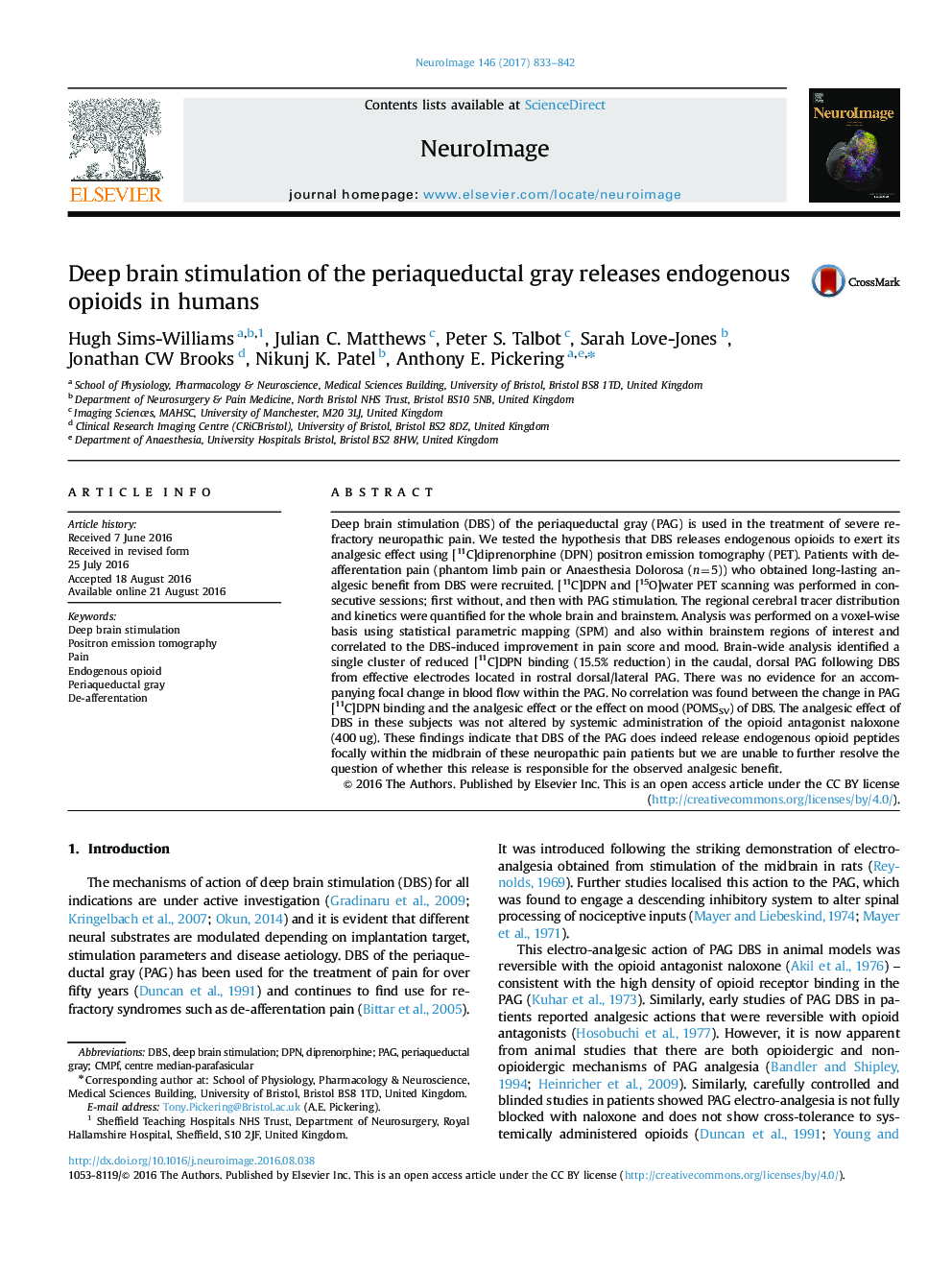| کد مقاله | کد نشریه | سال انتشار | مقاله انگلیسی | نسخه تمام متن |
|---|---|---|---|---|
| 5631387 | 1580864 | 2017 | 10 صفحه PDF | دانلود رایگان |
- Sequential opioid-PET imaging study of deafferentation pain patients.
- All obtained analgesic benefit from deep brain stimulators (DBS) in periaqueductal grey (PAG).
- PET imaging with diprenorphine showed DBS reduced binding of the radioligand in the PAG.
- Change in binding consistent with DBS-evoked release of endogenous opioids.
Deep brain stimulation (DBS) of the periaqueductal gray (PAG) is used in the treatment of severe refractory neuropathic pain. We tested the hypothesis that DBS releases endogenous opioids to exert its analgesic effect using [11C]diprenorphine (DPN) positron emission tomography (PET). Patients with de-afferentation pain (phantom limb pain or Anaesthesia Dolorosa (n=5)) who obtained long-lasting analgesic benefit from DBS were recruited. [11C]DPN and [15O]water PET scanning was performed in consecutive sessions; first without, and then with PAG stimulation. The regional cerebral tracer distribution and kinetics were quantified for the whole brain and brainstem. Analysis was performed on a voxel-wise basis using statistical parametric mapping (SPM) and also within brainstem regions of interest and correlated to the DBS-induced improvement in pain score and mood. Brain-wide analysis identified a single cluster of reduced [11C]DPN binding (15.5% reduction) in the caudal, dorsal PAG following DBS from effective electrodes located in rostral dorsal/lateral PAG. There was no evidence for an accompanying focal change in blood flow within the PAG. No correlation was found between the change in PAG [11C]DPN binding and the analgesic effect or the effect on mood (POMSSV) of DBS. The analgesic effect of DBS in these subjects was not altered by systemic administration of the opioid antagonist naloxone (400Â ug). These findings indicate that DBS of the PAG does indeed release endogenous opioid peptides focally within the midbrain of these neuropathic pain patients but we are unable to further resolve the question of whether this release is responsible for the observed analgesic benefit.
Journal: NeuroImage - Volume 146, 1 February 2017, Pages 833-842
